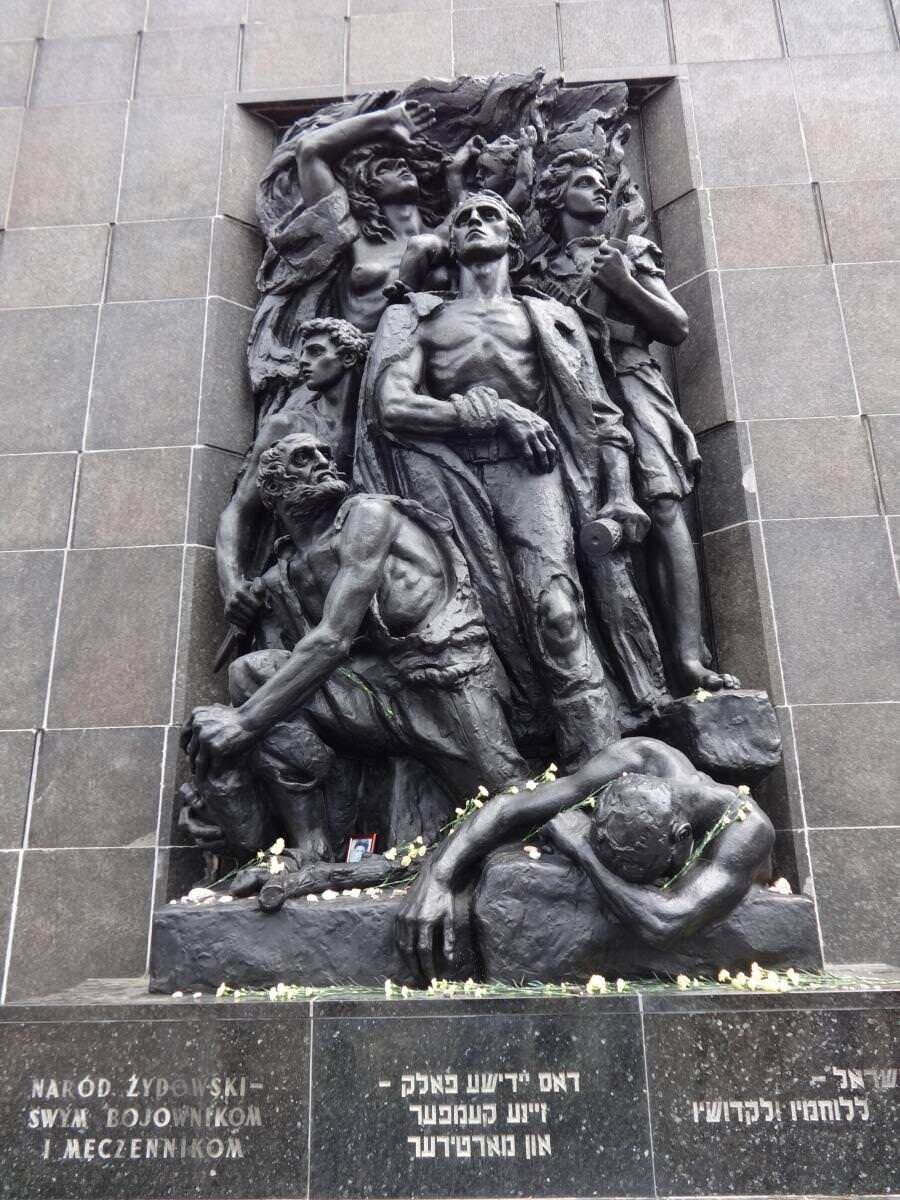
Polish Society and the Holocaust
At the beginning of the war Jews were pulled out of Polish society, taken from their homes and shut up in closed-off ghettos. Until 1941, they were murdered in indirect ways through the effects of forced labor, hunger and disease. After 1941, Jews were transferred to the death camps: Auschwitz with one and a half million victims; Treblinka with one million victims; Belzec with 430,000 victims; Chelmno (Kulmhof) with 360,000 victims, Sobibor with 260,000 victims, Majdanek with 230,000 victims. Majdanek was unique among the death camps in that the Jewish victims were not an overwhelming majority.
The camps were places of death not only for Polish Jews but also for Jews sent there by the Nazis from all over Europe. Many Jews never made it to camps but were killed on the spot — especially in the Soviet Union. During the invasion of the Soviet Union, over 3,000 special killing units (Einsatzgruppen) followed the German troops and conducted mass killings of Communist officials and of the Jewish population that lived on Soviet territory. Entire communities were wiped out.
The attitudes of Poles towards the tragedy of Jews varied. The majority was terrorized by Nazis — we should remember that during World War Two, the Nazis killed three millions Poles. They were unable to help Jews in the closed-off ghettos. It is important to remember too that in Poland the Nazis ordered the automatic death sentence for anyone caught trying to help Jews, and the penalty was extended to the family and even neighbors of any rescuer—a penalty that only existed in Poland. Probably a few thousand Poles were killed by the Nazis for helping the Jews.
Against all the odds a few hundred thousand Poles helped with different forms of relief for the Jews. The Polish people are, in fact, the biggest ethnic group among the “Righteous Among the Nations,” that is the rescuers of Jews under the Nazis rule. Only a small group of Poles—extreme nationalists and criminals—supported and actively helped the Nazis in their persecution of the Jews. Blackmailers, who lived on the money of Jews in hiding, were an especially big problem.
A courier of the Polish émigré government in London, Jan Karski, was the first person to inform US President Roosevelt and Winston Churchill about the mass extermination of Jews in Poland. However, as we know, the Western allies did not even bomb the rail lines going to the Auschwitz camp.
The attitude of Poles towards the Jewish tragedy depended in large part on their political outlook. A section of Jewish refugees who had escaped from the ghettos joined the Communist guerrilla “resistance.” Inside the ranks of the Polish Communists there were 17 guerrilla units with a large number of Jews. At the same time, extreme Polish nationalists, mainly from the National Armed Forces, were responsible for more than 120 cases of killing Jewish refugees (individuals and groups) in the Polish forests. The arrival of the Red Army ended the slaughter of Jews in Poland. By then 88 per cent of Polish Jews had been wiped out in the Holocaust.
Adapted from Poland and the Holocaust by August Grabski
